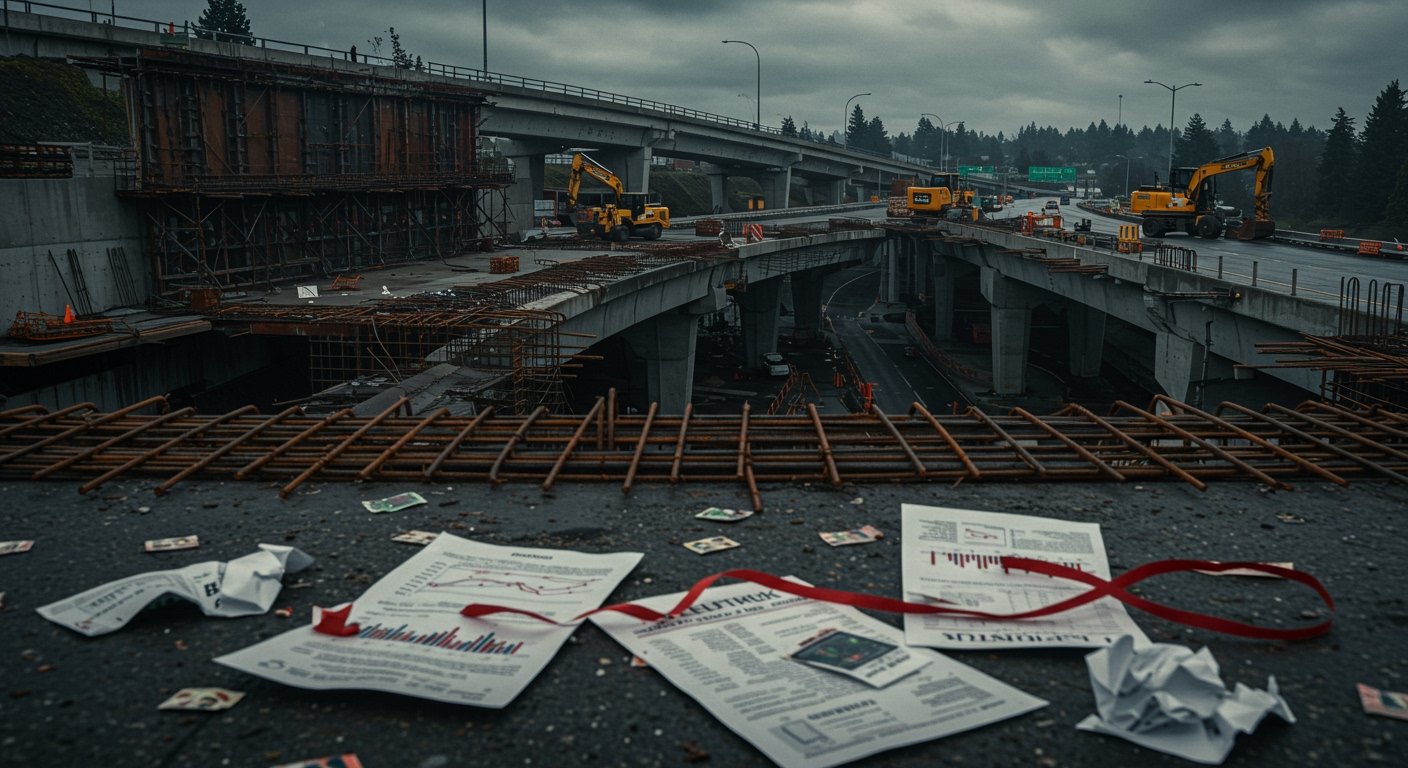SALEM, Ore. — A critical effort to secure long-term funding for Oregon’s transportation infrastructure collapsed during the recent legislative session, leaving lawmakers, state agencies, and the public grappling with stalled projects and uncertain futures. The failure of a comprehensive transportation package, intended to address pressing needs across the state’s roads, bridges, and transit systems, stemmed from a confluence of factors, ranging from public aversion to new taxes to significant credibility challenges facing the Oregon Department of Transportation (ODOT).
Understanding the Impasse
The legislative session saw intense debate over how to finance the state’s growing transportation demands. While the necessity for substantial investment was widely acknowledged, consensus on funding mechanisms proved elusive. A key piece of proposed legislation, representing a mix of potential revenue sources, was introduced relatively late in the session, on June 9. This timing compressed the window for negotiation and compromise, exacerbating existing divisions.
Democrats, holding a legislative majority, initially sought significant revenue increases, including a substantial hike in the state’s gas tax. Republicans, meanwhile, countered with a plan that expressly avoided imposing new taxes or fees on Oregonians. The ideological gulf proved difficult to bridge, leading to protracted negotiations that extended into the session’s final hours.
In a last-ditch effort to garner sufficient support, particularly from hesitant members within their own caucus, Democrats reportedly scaled back their request for a gas tax increase from 12 cents or more per gallon down to a mere 3 cents. However, even this reduced proposal failed to secure the necessary votes, highlighting the deep divisions and lack of political will to pass a funding package reliant on new revenue.
Public Opposition and Funding Options
At the heart of the legislative struggle was the deeply unpopular nature of the very options available for raising transportation funds. Lawmakers were acutely aware of public resistance to new financial burdens. The potential mechanisms discussed included increasing the existing gas tax, implementing a per-mile fee based on vehicle usage, raising vehicle registration fees, or creating entirely new fees on transactions such as car sales or deliveries. While these options represent conventional approaches to transportation funding, their consideration faced significant political headwinds and public pushback, making any package incorporating them a difficult sell.
ODOT’s Role and Credibility Challenges
The Oregon Department of Transportation, the state agency responsible for managing much of the infrastructure in need of funding, played a significant, and at times controversial, role in the debate. ODOT officials stated the agency needed an additional $1.8 billion to address the state’s transportation infrastructure needs. However, legislative leaders and the public reportedly found it challenging to understand or justify this specific figure, contributing to skepticism about the agency’s financial planning.
Adding to ODOT’s difficulties were significant errors uncovered in its financial reporting. Travis Brouwer, ODOT’s assistant director and top finance official, reported a colossal error in the agency’s 2023-25 budget submission, revealing a discrepancy of more than $1 billion. This significant miscalculation severely undermined confidence in ODOT’s fiscal management capabilities just as lawmakers were being asked to commit substantial new funds to the agency.
Further eroding ODOT’s credibility were updated cost estimates for the long-planned I-5 Rose Quarter Improvement Project in Portland. The projected cost for this major project escalated again, rising to an estimated $1.96 billion to $2.08 billion, up from earlier estimates of $1.5 billion to $1.9 billion. These ballooning costs, coupled with the budgetary errors, fueled concerns among lawmakers and the public about ODOT’s ability to accurately estimate and manage large-scale projects and finances.
Key Reasons for Failure Synthesized
Ultimately, the failure of the Oregon transportation package can be attributed to a perfect storm of challenges. Public and political opposition to new taxes and fees created a difficult starting point for any funding proposal. This was compounded by significant credibility issues at ODOT, stemming from unexplained funding needs, a major budgetary error reported by its top finance official, Travis Brouwer, and escalating costs on high-profile projects like the I-5 Rose Quarter Improvement Project (rising from $1.5 billion-$1.9 billion to $1.96 billion-$2.08 billion). The legislative process itself, with the late introduction of the package on June 9 and the deep partisan divisions that persisted until the session’s final hours, proved unable to overcome these hurdles.
Looking Ahead
Following the package’s failure, Governor Tina Kotek suggested that transportation funding and policy issues might need to be addressed incrementally in every legislative session, rather than relying on large, infrequent bills every few years. This approach could allow for smaller, potentially less controversial measures to pass, though it also risks perpetuating a piecemeal strategy towards addressing the state’s significant and growing transportation infrastructure deficit. As Oregon looks to the future, finding a sustainable and politically viable path to funding its transportation needs remains a critical, unresolved challenge.




